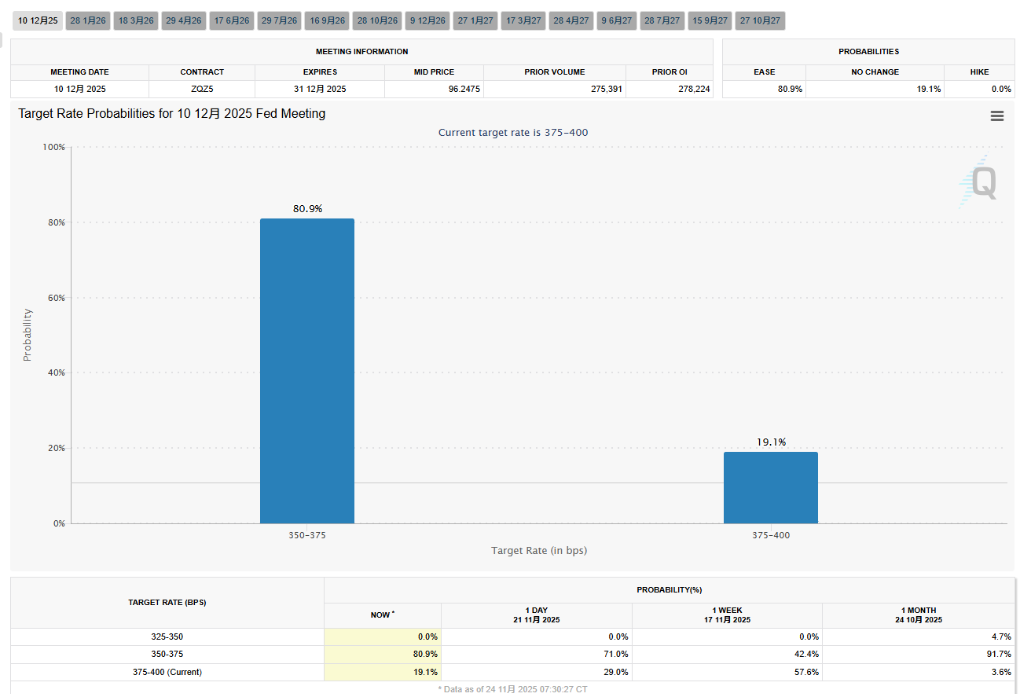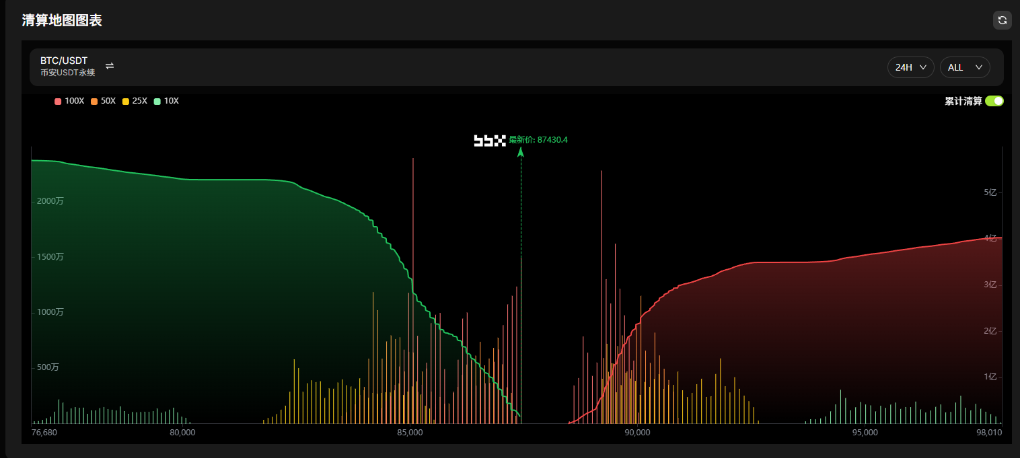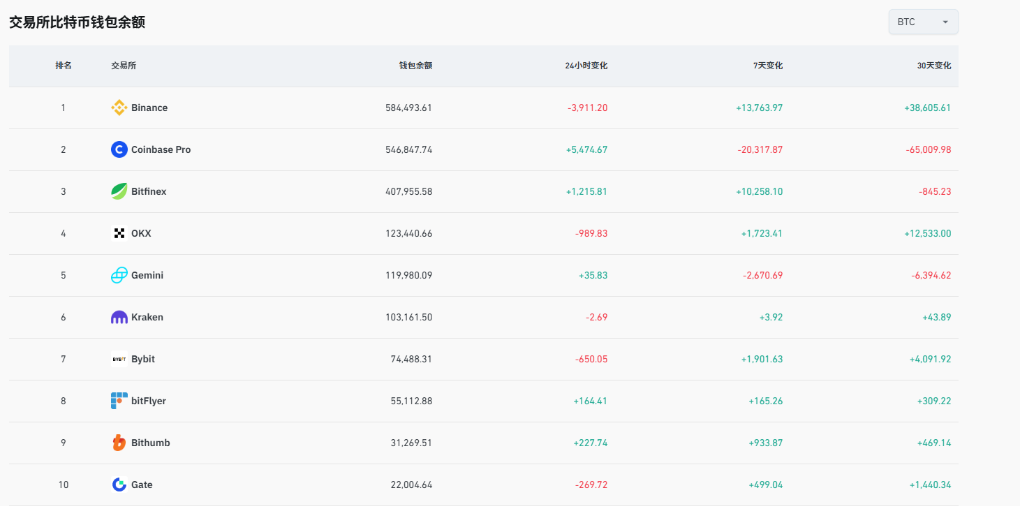The sky in the world of digital assets has only temporarily cleared, rather than truly warming up.
The warm winds of rising expectations for a Federal Reserve interest rate cut have stirred the spring waters of global asset markets. U.S. stocks rebounded for two consecutive days, with the Nasdaq achieving its largest single-day gain in over six months.
Amid the jubilation in traditional financial markets, the crypto market is also showing signs of recovery, with Bitcoin rebounding from its low in early November, once again approaching the $90,000 mark.
This seemingly sudden rebound, however, faces the test of unstable foundations. The outflow of funds from U.S. Bitcoin ETFs has reached a historic record, the Coinbase premium index has remained negative, and there are clear signs of institutional fund withdrawals. All of this suggests that the current rise may only be a rebound within a downward trend.

1. Global Risk Asset Rebound
Global risk assets experienced a broad rally on November 24. The Dow Jones rose by 0.44%, the S&P 500 increased by 1.55%, and the Nasdaq surged by 2.69%.

Tech stocks became the market leaders, with Tesla and Google rising over 6%, and Nvidia also recording an increase of more than 2%.
● This round of market optimism stems from the series of interest rate cut signals released by Federal Reserve officials. Fed Governor Waller publicly stated, “Most private sector data shows a weak job market, and he advocates for a rate cut in December.”
● San Francisco Federal Reserve Bank President Daly also supports a rate cut next month, arguing that the likelihood of a sudden deterioration in the job market is greater than that of a sudden rise in inflation.
● According to CME's "FedWatch" data, the probability of a 25 basis point rate cut by the Fed in December has surged to 82.9%, a significant increase from the previous day's 69.4%. This series of signals has greatly encouraged investors, prompting funds to flow back into risk assets.

2. Three Major Pieces of Evidence for Rebound Rather Than Reversal
Evidence 1: Historic Outflow of Bitcoin ETF Funds
● Bitcoin ETFs are facing the most severe outflow of funds since being approved for listing in January of this year. As of November 21, the net outflow from all Bitcoin ETFs in November has reached $3.5 billion, nearly matching the historical record of $3.6 billion set in February of this year.

● The IBIT fund, which holds about 60% of the Bitcoin ETF market under BlackRock, recorded $2.2 billion in redemptions in November, expected to mark the fund's worst monthly performance.
● Citigroup's research indicates that for every $1 billion that flows out of Bitcoin ETFs, the price drops by about 3.4%. According to this model, the outflow of ETF funds has exerted significant downward pressure on Bitcoin prices.

Evidence 2: Coinbase Premium Index Remains Negative
● As a key barometer for observing the flow of institutional funds in the U.S., the Coinbase Bitcoin premium index has remained in negative territory for several consecutive days since October 31.
● This index measures the deviation of Bitcoin prices on Coinbase compared to the global market average. When the index is negative, it indicates that Bitcoin prices in the U.S. market are consistently below the global average, suggesting that U.S. professional investors are not buying the dip but are instead continuing to reduce their positions.
● This deep negative premium environment is a first for this year, clearly showing the attitude of U.S. institutional funds towards the crypto market.

Evidence 3: Leverage Liquidation and Weak Market Structure
● During this round of market decline, leverage liquidation has played a role in exacerbating the situation. Data shows that in October, nearly $20 billion in leveraged positions were passively liquidated in a single day across the market.
● This large-scale forced liquidation has left behind a significant amount of fragmented positions and weak order book liquidity after passive reductions.
● In this environment, as long as prices break through key integer levels (such as $100,000 or $90,000), stop-loss and margin call levels set at these price points will be triggered en masse, and the forced liquidation procedures of exchanges will mechanically accelerate selling, creating a typical "liquidation waterfall."

3. The Attributes of Crypto Assets Are Being Redefined
Bitcoin is undergoing a transformation from a "safe-haven asset" to a "high-risk growth asset."
● Over the past six weeks, the total market capitalization of global crypto assets has evaporated by approximately $1.2 trillion, a decline of about a quarter. Bitcoin has fallen nearly 30% from its October peak, closely synchronized with the adjustment rhythm of some overvalued tech stocks and AI concept stocks.

● This phenomenon indicates that, with the rising proportion of institutional holdings, Bitcoin no longer operates in an "independent cycle" but is increasingly integrated into the unified allocation framework of global risk assets.
● When a portfolio needs to reduce overall risk, it is pressed on the same "reduce position button" as high-beta tech stocks.
● Macroeconomic policies and geopolitical events have become the core external variables influencing Bitcoin's mid-term trends. From inflation concerns triggered by U.S. tariff policies to changes in expectations for Fed rate cuts, what were once "keywords" belonging to traditional finance are now directly reflected in Bitcoin prices.
4. Liquidity Crisis: Who Is Draining Market Funds?
● Over the past three weeks, the cryptocurrency market has been experiencing a silent liquidity crisis. The Coinbase premium index is deeply negative, Bitcoin ETFs are facing the largest outflow of funds in history, and exchange reserves continue to decline—three key indicators are simultaneously flashing red, revealing the severe reality of large-scale withdrawals of U.S. institutional funds.
● Centralized exchanges also net reduced their holdings by about 8,181 BTC in November compared to October, valued at approximately $842 million. More macro data shows that the total Bitcoin reserves of all centralized exchanges have decreased by about 18% from the levels at the end of 2024.

● This ongoing "blood loss" state indicates that investors are transferring assets from exchanges to private wallets or other investment channels, and the liquidity of exchanges is gradually being drained.
● Against the backdrop of widespread outflows, different exchanges are showing significant differentiation. Platforms dominated by institutions, such as Coinbase and Kraken, are experiencing the most severe outflows, while Binance, which attracts retail users, is playing a role as a "buyer" to some extent.
This liquidity stratification may lead to persistent price differences for the same asset across different platforms, increasing arbitrage opportunities while also raising trading costs.
5. Outlook: Key Signals for Market Turning Points
Stabilization in the market requires attention to several key signals:
● A positive Coinbase premium index would be the most direct evidence of a recovery in U.S. institutional demand;
● If ETF fund outflows slow down to a net outflow of less than $100 million per day, it may indicate that selling pressure is nearing its end;
● A net inflow into exchanges turning positive usually signals the formation of a price bottom.
Several factors could act as catalysts for a market turning point:
● If the December FOMC meeting releases clear dovish signals, it may reignite risk appetite;
● The Bitcoin holdings disclosed by large publicly listed companies in their Q4 earnings reports may influence market sentiment;
● If the technical indicators can effectively break through previous highs, it will break the current downward trend and attract trend traders to enter the market.
● From the perspective of Bitcoin's halving cycle, we are currently in the 18th month after the third halving. Historical data shows that this stage is often accompanied by significant volatility and adjustments in institutional holdings, but it is also a critical period for accumulating energy for the next major upward wave.
Citigroup's Alex Saunders has set a bear market target of $82,000 for Bitcoin by the end of this year, based on the assumption of zero inflows into the market. If funds continue to flow out, Bitcoin may face greater downward pressure.
Markets are always born in despair, grow in hesitation, and mature in optimism. The current predicament of Bitcoin reflects its inevitable path as an emerging asset—being repositioned within the traditional financial framework, repeatedly repriced by institutional funds, and ultimately finding its value center.
When the Coinbase premium index turns positive and when ETF funds stop flowing out will be key indicators for assessing whether the market is truly warming up.
Join our community to discuss and grow stronger together!
Official Telegram community: https://t.me/aicoincn
AiCoin Chinese Twitter: https://x.com/AiCoinzh
OKX benefits group: https://aicoin.com/link/chat?cid=l61eM4owQ
Binance benefits group: https://aicoin.com/link/chat?cid=ynr7d1P6Z
免责声明:本文章仅代表作者个人观点,不代表本平台的立场和观点。本文章仅供信息分享,不构成对任何人的任何投资建议。用户与作者之间的任何争议,与本平台无关。如网页中刊载的文章或图片涉及侵权,请提供相关的权利证明和身份证明发送邮件到support@aicoin.com,本平台相关工作人员将会进行核查。




